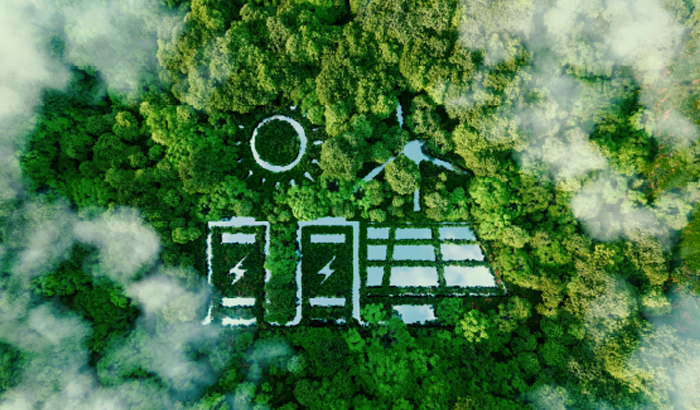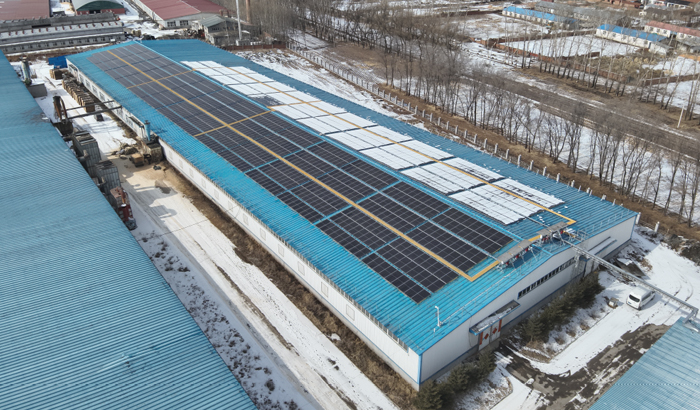With the arrival of spring and the earth's gradual recovery, the peak season for solar power generation is just around the corner. In this article, we will go over some basic year-round guidelines for operating and maintaining photovoltaic systems.

Spring
1. Will the electricity generation system be affected by things like spring leaves, the shadow of the house, PV modules, leaves, or even bird droppings?
The power generation system can be significantly affected when photovoltaic modules are shaded by objects like houses, leaves, or even bird droppings. To avoid the so-called hot spot effect, which occurs when a cell's electrical performance is poor or shaded, it is important that the electrical characteristics of the PV cells used in each module be consistent. Shaded PV cells act as a load, drawing energy from nearby light-sensitive cells; this process is known as the hot spot phenomenon, and it can cause significant damage to the PV module if left unchecked. To prevent overheating in series branch circuits, bypass diodes must be installed on PV modules. Similarly, DC insurance must be applied to each PV string to avoid overheating in parallel circuits. Shade on PV cells can reduce their output even when no hot spot effect occurs.
Summer
1. During summer thunderstorms, how may household distributed PV systems be specifically and effectively protected from lightning strikes?
Lightning strikes on solar systems can destroy equipment and render the systems inoperable; thus, it is crucial to take precautions to protect photovoltaic power plants against lightning strikes. The following steps can be taken to safeguard PV systems from lightning:
1). the PV square array is grounded once it is securely fastened to the bracket.
2). the PV metre box is grounded and lightning protected.
3). the PV inverter is grounded.
Installing a photovoltaic (PV) system on an existing building usually does not necessitate laying a separate grounding system, provided that the PV system's grounding line is linked to the building's grounding system. However, whether or not a lightning catcher (lightning rods) needs to be set up depends on the specifics of each case.
2. In the event of a thunderstorm, is it necessary to turn off the PV power generating system?
There is no need to unplug household distributed photovoltaic systems because they are fitted with lightning safety mechanisms. It is advised that you disconnect the circuit breaker switch in the metre box and then cut off the power to the PV module for safety reasons. This will prevent the lightning protection module from being damaged by direct lightning. The risks associated with a lightning protection module failure can be mitigated if operation and maintenance staff promptly test the module's functionality.
3. Do you have to replace susceptible gadgets right after a major summer storm hits?
Not suitable for immediate replacement; best to wait until early morning or late afternoon to do the replacement. The power station's operation and maintenance staff will dispatch trained individuals to take their place if you notify them in a timely manner.
4. How can we manage the increased warmth and airflow to PV modules during the summer?
Since the output power of photovoltaic modules decreases as temperatures rise, increasing the efficiency of power generation through ventilation and heat dissipation is possible; the most popular approach is to employ natural wind as a ventilator.
Autumn
1. In the dry fall months, what is the most important thing to keep in mind when preventing and combating fires in homes with distributed photovoltaic systems?
The unimaginable loss of life and property that could result from a fire makes it imperative that combustible and explosive items not be stacked in close proximity to residential distributed photovoltaic systems. In order to decrease the chance of fire, PV systems must contain self-detecting, arc-recognizing, and fire-protection capabilities, in addition to conventional fire safety procedures. Further requirements include an easily operable emergency DC system disconnect switch and the reservation of a fire prevention and maintenance channel every 40m at most.
2. Will a photovoltaic power generating system continue to function in the event of persistent rain or fog? Can we expect power outages or inadequate power?
Solar photovoltaic (PV) modules may produce power even in dim light; but, when it's consistently cloudy or rainy, the irradiance of the sun drops, and the PV system's operating voltage falls short of the inverter's starting voltage, rendering the system inoperable. With a home distributed PV system running in tandem with the distribution grid, power outages and shortages are a thing of the past. This is because the grid will automatically replenish electricity when the household PV system is unable to fulfil the load demand or is rendered inoperable by cloudy weather.
Winter
1. In the dead of winter, will there be a lack of electricity?
Indeed, temperature affects the power output of photovoltaic systems; direct influencing parameters include irradiation intensity, sunshine duration, and the operating temperature of the solar cell module. It is to be expected that irradiation intensity will be lower in winter due to shorter sunshine duration and generally lower power generation compared to summer. Nevertheless, because of the grid-connected residential distributed PV system, the load will not show signs of power shortage or outage as long as the grid has power.

2. Does snowfall necessitate cleaning of the PV power system? What happens to the PV parts when the winter snow melts and re-freezes? To clean the module, can I just stand on top of it?
It is important to clean the component after heavy snowfall. Use soft objects to push down the snow, being careful not to scratch the glass. The component has a load-bearing capacity, so cleaning it on top of it can cause hidden cracks or damage, which can shorten its life. Generally speaking, you shouldn't wait until the snow is too thick to clean it, as this can lead to over-icing.
3. Can a distributed photovoltaic system in a home withstand hail damage?
Certified and tested by organisations like CGC, CQC, or TUV, among others, are the components that make up a home distributed PV system. It is common practice to subject the front side to a maximum static load of 5400Pa (wind load, snow load), the rear side to a maximum static load of 2400Pa (wind load), and to subject the structure to a battery of rigorous tests, including the impact of 25 mm hailstones at a speed of 23 m/s. So, the photovoltaic power generating system is usually safe from hail.







